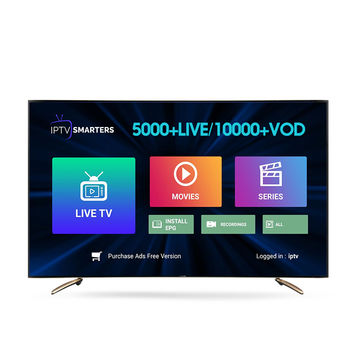Experience Smooth Streaming: Sign Up for Our IPTV Subscription
Experience Smooth Streaming: Sign Up for Our IPTV Subscription
Blog Article
Exactly How IPTV Functions: A Step-by-Step Guide to Internet Method Television Technology
Web Protocol Television (IPTV) has actually revolutionized the method we take in tv material, providing a new realm of opportunities via the power of the web. Understanding the details of how IPTV functions can clarify the modern technology that drives this ingenious kind of media shipment. From the essential concepts of IPTV to the complicated procedure of content distribution, each action plays a crucial duty in making sure a smooth watching experience. In this guide, we will discover the hidden systems that make IPTV a remarkable combination of modern technology and amusement.
IPTV Fundamentals
In understanding IPTV basics, it is critical to comprehend the fundamental operations of this innovation in supplying tv web content over the net. IPTV, which means Web Protocol Television, utilizes Internet Protocol (IP) networks to send tv content to individuals' devices. Unlike typical techniques of broadcasting television web content via wire or satellite signals, IPTV streams media via high-speed net connections.

Moreover, IPTV permits for interactive capacities, such as video as needed (VOD) and digital program overviews (EPG), boosting the individual experience by supplying more control and versatility in accessing content. In general, comprehending the fundamentals of IPTV establishes the foundation for discovering its even more advanced performances and the benefits it offers to contemporary tv consumption.
Material Shipment Process
Effective content shipment in IPTV systems includes a well-structured procedure that guarantees seamless transmission of tv content over IP networks. The material distribution procedure in IPTV starts with the creation of the video clip web content, which is then encoded into electronic format ideal for IP transmission.

Middleware Performance
With the integration of middleware, IPTV systems gain boosted functionality that streamlines customer communication and content management. One of the key features of middleware in IPTV is to allow tailored user experiences by offering features such as interactive program overviews, that site video-on-demand solutions, interactive advertising and marketing, and user choices administration.

Device Compatibility
Offered the critical role of middleware in making it possible for seamless communication and content monitoring in IPTV systems, an essential aspect to consider is the compatibility of gadgets used for accessing the IPTV solutions. Device compatibility is vital for ensuring a smooth individual experience and optimal efficiency when accessing IPTV material.
In the context of IPTV, device compatibility describes the ability of a tool to successfully connect with the IPTV solution, present material correctly, and support the needed methods and codecs for streaming video clip web content over the net. Various tools, such as wise TVs, set-top boxes, smartphones, tablet computers, and computer systems, might have varying degrees of compatibility with IPTV solutions.
To make certain a go to my blog smooth watching experience, it is very important for customers to select devices that are suitable with the details IPTV solution they are utilizing. Furthermore, IPTV provider should use support for a vast array of tools to deal with the varied requirements of their individual base. By prioritizing tool compatibility, both customers and company can boost the general IPTV experience.
High Quality of Solution (QoS)
Considering the vital role of preserving a high requirement of performance and dependability in IPTV systems, guaranteeing regular High quality of Solution (QoS) stays an essential aspect of the user experience. QoS in IPTV refers to the capability of the system to deliver web content with minimal disturbances, high resolution, and quickly packing times. To achieve ideal QoS, different elements need to be addressed. Network bandwidth is crucial to support top notch video streaming without buffering or pixelation. Additionally, latency, jitter, and package loss have to be decreased to improve the viewing experience.
Company utilize QoS devices such as web traffic prioritization, buffering, and mistake improvement to maintain a secure IPTV solution. By focusing on IPTV traffic over less time-sensitive data, carriers can make sure smooth playback also during peak usage hours. Buffering assists make up for network fluctuations, while mistake modification techniques improve information stability.
Continual tracking and optimization of QoS criteria are important to adjust to altering network conditions and individual demands. Inevitably, a robust QoS structure is essential for providing a smooth and delightful IPTV experience to individuals.
Conclusion
Finally, IPTV operates through the transmission of tv content over internet method networks. The technology entails an organized process of material delivery, assisted in by middleware capability to ensure compatibility across different gadgets. High quality of Solution plays an essential duty in maintaining the efficiency and reliability of IPTV services. Comprehending the essential principles of IPTV is crucial for realizing the ins and outs of this ingenious television modern technology.
Report this page